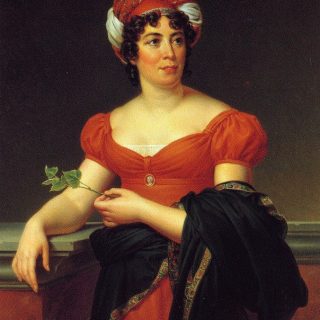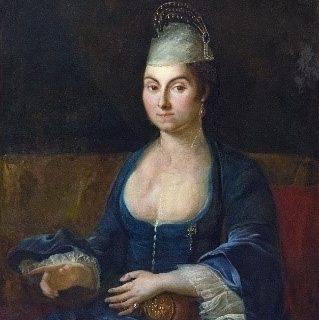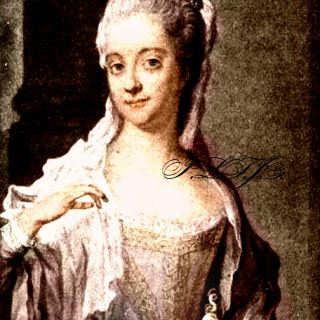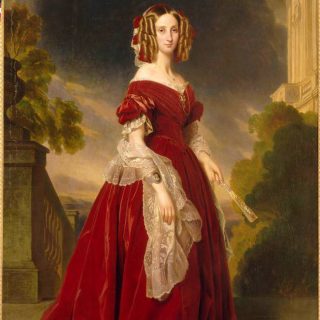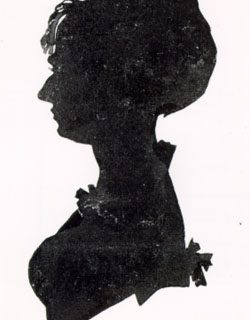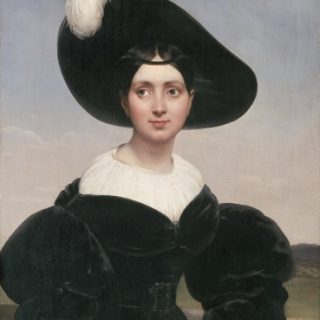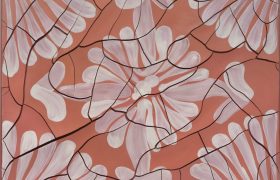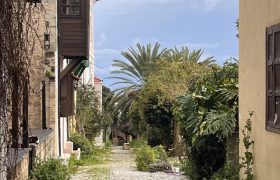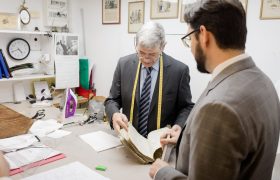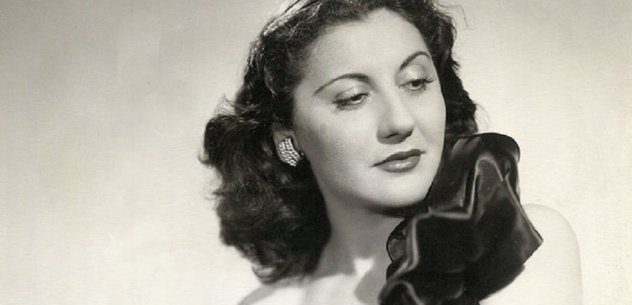Meet 30 Philhellene women who changed the course of Greek history
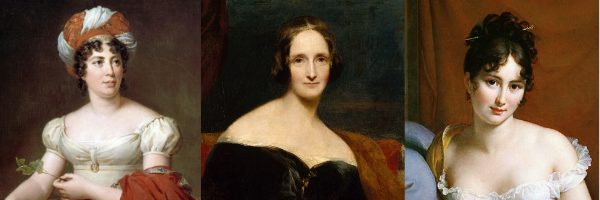
Lord Byron and Eugene Delacroix may steal the spotlight as the most vocal champions of Greece’s struggle for independence. But a band of powerful and international female philhellenes also played a stellar role in the founding of the new Greek state. From princesses and poets, to socialites, missionaries and authors, we introduce 30 influential women who were united by their passion and purpose to shape the course of Greek history (and inspire a new “Greek Mania” fashion movement while they were at it!).
Like the idea of Greece, philhellenism was a movement that transcended borders, and in fact, brought together warring European factions under the same flag. In Greece, they achieved a personal and collective transcendence. A lot of the European philhellenes responded directly to requests from Greek women revolutionaries and intellectuals such as Evanthia Kairis (1799–1866) and Manto Mavrogenous (1796-1848) to intervene. Others educated themselves and took on the Greek Cause, often at great personal risk and sacrifice.
- Madame de Staël
- Elisabeth Santi Loumaki-Chenier
One of the most vocal supporters of the Greek Revolution was Madame de Staël (Louise Germaine de Staël-Holstein, 1766-1817), a French writer and philhellene, who became associated with Lord Byron. A highly regarded lady of French High society, she was among the first to familiarize the public with the Greek issue.
The intellectual Elisabeth Santi Loumaki – Chenier (1729-1808) was born in Constantinople. She was married to diplomat and merchant, Louis Chénier, and held a central position in the intellectual world of Paris. Her salon was a meeting point of the intellectual world of the French capital in the early 19th century; the fermentations that led to the establishment of the “Hôtel Hellénophone”, the first secret pre-revolutionary organization aiming at the liberation of Greece, took place under the guidance of Loumaki- Chenier. The president of the Hotel was the great French philhellene, Auguste de Choiseul-Gouffier (1752-1817), ambassador of France to the Ottoman Empire (1784-1792) and author of “Voyage pittoresque sur la Grece”. Athanasios Tsakalov (1790-851), one of the three founders of the patriotic Friendly Society, was trained in this organization. The “Hôtel Hellénophone”, aimed to recruit new members, and even to send weapons to Greece to prepare for the expected revolution. Loumaki -Chenier was the mother of two famous French poets, the neoclassical poet André Chenier (1762-1794) and Joseph Chenier (1764-1811).
Another bright Greek woman of aristocratic origin played a similar role, and ten years later she transformed her own salon into the headquarters, where the developments and strategic decisions of the Friendly Society took place. Her name was Elizabeth Ypsilantis (1768-1866) and was the mother of Alexandros and Dimitrios Ypsilantis. The final decision for the start of the Greek Revolution was made in her salon, and even the emblematic proclamation “Battle for faith and homeland” was drafted there. Before Alexandros Ypsilantis signed it, he asked his mother to dispose of all the family real estate for the support of the Greek Struggle. And when she accepted, he kissed her hand. In fact, she completed the announcement by noting in the text in her honour before signing “I osculate my mother’s hand”.
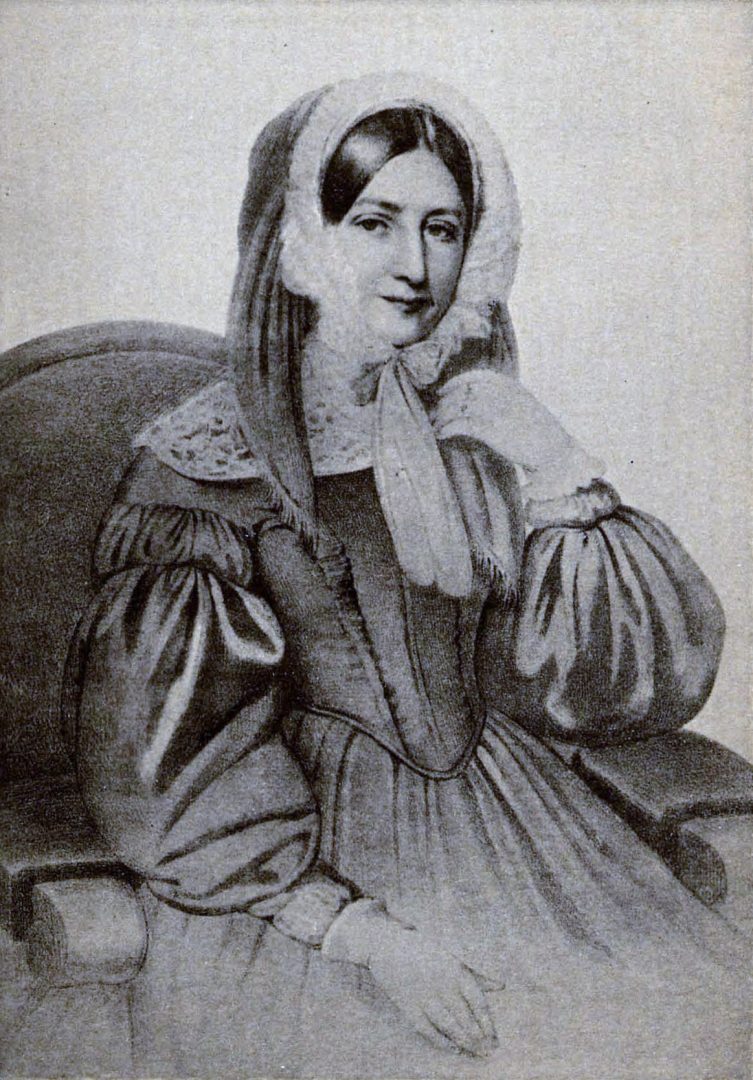
Roxandra Stourtza
Roxandra Stourtza (1786-1844), was born in Constantinople. She became the master of ceremonies at the court of the Russian Tsar Alexander I (1777-1825) and his wife Elizabeth (1779-1826). She became associated with Ioannis Kapodistrias, but married, at the tsar´s urging, the German count of Edling (1771-1841), Minister and Marshal of the Grand Duke of Saxony-Weimar, as Alexander did not approve of a marriage with Kapodistrias. The fact did not prevent her from developing an important, intellectual and political relationship with Kapodistrias, following him and the Tsar to the Congress of Vienna (1815). There she met Anthimos Gazis and the Metropolitan of Hungary, Ignatius, and they decided to establish the pro-revolutionary “Philomous Society”. Its targeting by the Austrian Foreign Minister Klemens von Metternich (1773-1859) was a matter of time. Stourtza was not intimidated by Metternich’s decision to disband the Society´s office in Vienna, and she continued her actions by supporting Greek students in the city by collecting fundraisers. With several of her initiatives, she tried to mobilize international public opinion in favour of the Greek Cause. After the outbreak of the Greek Revolution, she treated the persecuted Greeks who arrived in Odessa in Russia, with the valuable help of Elizabeth, who had also offered significant sums as a subscriber of the Philomous (Friends of Music) Society of Vienna.
In the pre-revolutionary time, another woman became associated with the Russian Tsar Alexander I; the brave philhellene from the Baltic, Barbara Julie de Krüdener (1764–1824). Krüdener was a Protestant missionary of aristocratic descent. She became friends with Alexander I and influenced him decisively in establishing the Holy Alliance. It is reported, that the choice of this name was her own suggestion. She supported the establishment of the Holy Alliance, believing that it would protect and support the independence of the Greeks. In 1821, having realized that the attitude of the Holy Alliance was not philhellenic, she went to St. Petersburg in order to influence the neutral Alexander to take a public stance in favour of the Greeks. Alexander’s annoyance by Krüdener’s insistence on persuading him was such, that he eventually exiled her to Crimea. Krüdener’s ardent philhellenism was the reason for losing her social position, her privileges, her wealth – even her personal relationship with the tsar.
Alexander’s wife, tzarina Elizabeth, was not the sole example of a royal member with philhellenic attitude. Caroline von Braunschweig-Wolfenbüttel (1768 – 1821) was the wife of King George IV of the United Kingdom, and a philhellene, who strongly supported the Philomus Society and its aims. She visited Athens in 1816, where she organized archaeological excavations.
- Sophia Albertina of Sweden
- Louise Marie Thérèse Charlotte Isabelle d’Orléans
Also impressive is the activity developed by Princess Sophia Albertina of Sweden (Sophia Maria Lovisa Fredrika Albertina, 1753 – 1829), the sister of the Swedish king. After the outbreak of the Greek Revolution, she founded a women’s philhellenic committee, turning the palace into a centre of philhellenism. Hundreds of women rushed there to give money and support the Greek Struggle for liberation.
Even the princess Louise Marie Thérèse Charlotte Isabelle d’Orléans (1812-1850), and the whole royal house had sided with the Greeks. In a single fundraiser the Princess of Orléans offered 3,000 Francs in favour of the Greeks.
- Karen Margrethe
- Anna Eynard – Lullin
The ladies of the aristocracy in Europe helped the Greek Cause in various ways. Nurtured by classical education, they saw modern Greeks as worthy descendants of Leonidas and Miltiades. In the salon of the Danish artist Karen Margrethe “Kamma” Rahbek (1775-1829), the literary interests of the Danish society intersected with discussions about philhellenism.
The same example was followed by many noble and cultured ladies in many capitals of Europe. They turned their salons into a meeting place for philhellenes, and pioneered various charitable activities. The developments that took place there were crucial for the moral and material support of the Greeks. The philhellenic activity of these bright women was not inferior to that of the men.
Thus, Anna Eynard – Lullin (1793-1868), a Swiss painter and philanthropist, who is better known as the wife of the great politician and banker Jean-Gabriel Eynard (1775-1863), emerged with her own action as a warm philhellene. She founded a philhellenic women’s committee in Geneva. She organized philhellenic performances, receptions and concerts, and systematically raised money and collected various items for the Greek revolutionaries.
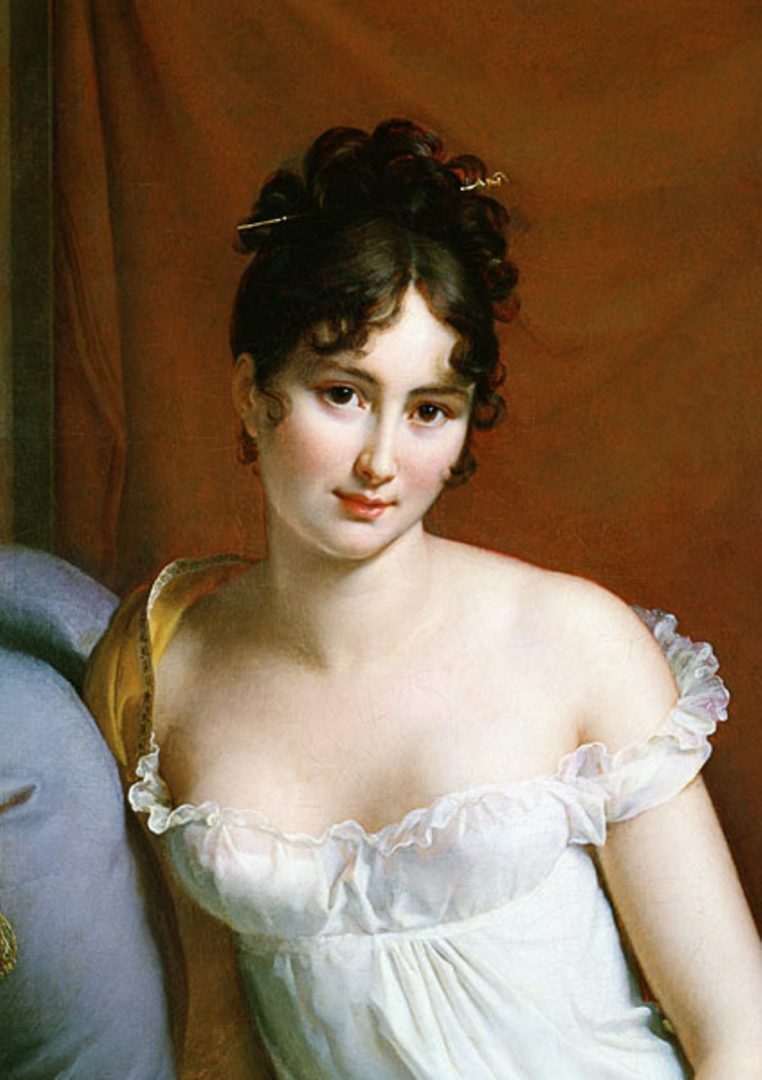
Madame de Récamier
The very active French philhellene, Madame Delcombre, was the head of the philhellene committee in Paris. She prepares a very nice silk flag (embroidered by herself), which she offers to the French Philhellene cavalry officer, Auguste Michel Marie Étienne Régnault (or Régnaud) de St-Jean d’Angely (and later Marshal of France), during a ceremony. The French Philhellene vows to constantly bring this flag to the battlefields. To Régnault’s great sorrow, the flag is lost in the battle of Karystos.
Another famous, beautiful Lady of the European aristocracy is Madame de Récamier (Jeanne Françoise Julie Adélaïde, 1777 – 1849). She was also a member of the Philhellenic Committee in Paris. Mme. Recamier corresponds with the Philhellene French officer Olivier Voutier (1796-1877), while he is in Greece. Récamier collected and published Voutier´s long letters, in which Voutier describes the Greek customs and traditions, historical sites and battle scenes, under the title “Letters for Greece”. Proceeds from the sale of the book, which moved the French in favour of the Greek struggle, were intended for the philhellenic committee. Récamier was an influential figure in the philhellenic movement. Her love for Greece and the Greeks was sparked by her relationship with the romantic writer, politician and philhellene François-René de Chateaubriand (1768-1848), and was maintained throughout the Greek struggle. Récamier supported the Greek Revolution with large financial offers from her own resources, as well as from fundraising revenues.
In France, philhellenism and “graecomania” reach such a level that they influence fashion: “Robes de dame a la Bobeline” are inspired by the heroic Bouboulina. The costume of the philhellenes incorporate Greek scarfs; it does not seem unnatural, when an aristocratic lady appears in a Greek costume during public events. In a concert given in Paris conducted by Rossini himself for the purposes of the Philhellenic Committee (8/4/1826), the musicians decorate the instruments with blue and white ribbons, the gentlemen wear blue and white armbands, the ladies decorate their gowns with Greek colours. After the concert, the ladies lead the philhellenic fundraiser.
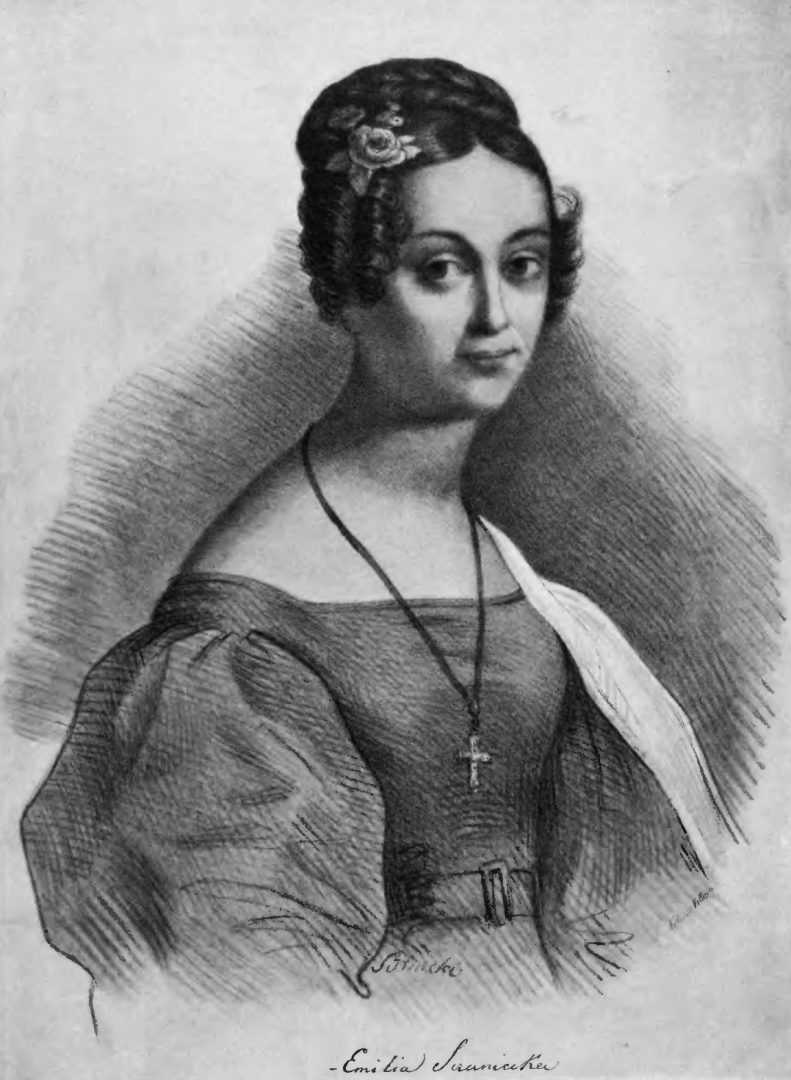
Emilia_Sczaniecka
The public manifestation of philhellenic feelings was, to a certain extent, a sign of the level of cultivation or sensitivity of a woman or a man of the time. It would be unfair to assume that the reasons related to a philhellenic stance were of a “superficial” nature. Suffice it to say that the most powerful forces in Europe were, during the first phase of the Greek Revolution, neutral or indifferent towards the Greek issue, while many were influenced by the spirit of Metternich, who was opposed to movements in Europe. Many Philhellenes acted, especially until 1824-1825, under the fear of being followed by the Metternich police. One such bright case is the Polish patriot Emilia Sczaniecka (1804-1896), who acted in the city of Poznan, and was identified with the Greek struggle for Independence from the very beginning. She was the “Bubulina of Poland”. She founded the “Committee for Aid to the Greeks” and organized fundraisers for the orphans of the fighters, as well as for the care of the wounded. The people who were involved in the Greek issue, acted many times at the risk of their lives and at a personal cost.
The buying (thus liberation) of Greeks from slave markets, and the adoption of orphaned children from Greece, were another two difficult fields of action for which the Greek women were interested. They required personal involvement, as well as emotional and material cost. The adoptions of Greek children in particular, who were offered a second life in Europe or the USA, were clearly events that transformed the lives of those involved forever.
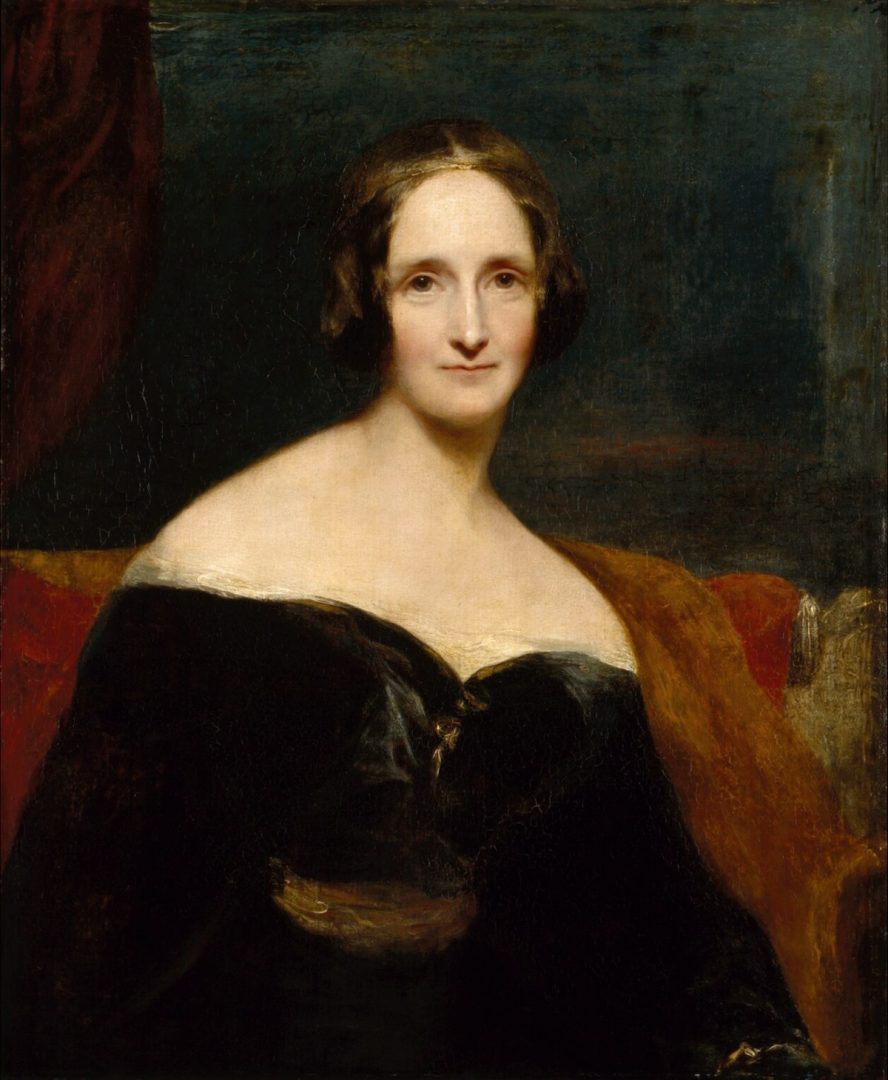
Mary Shelley
The presence and participation of women in literary philhellenism is also worth mentioning. Its most famous female representative is none other than the brilliant Mary Shelley (1797-1851) from England, the companion of Percy Shelley (1792-1822) and author of the famous work Frankenstein (1818). Shelley befriended Alexandros Mavrokordatos and the so-called “Pisa circle” around Metropolitan Ignatius. Percy Shelley’s “Hellas”, is dedicated to his “turban-wearing friend”, Alexandros Mavrokordatos. Shelley was identified with the Greek struggle for Freedom and Independence from the very beginning and had a decisive influence in shaping the philhellenic attitude of her close friend, Lord Byron (1788-1824). She learned Greek and along with her husband envisioned a free Greece, where they planned to move. Having experienced some traumatic events, such as the loss of her children, of her partner, Percy Shelley, from drowning, and a little later, of her close friend, Byron, from illness in Messolonghi, Shelley wrote the philhellenic science fiction novel “The Last Man”. In a nightmarish, dystopian future, the Greeks are trying to retake Constantinople, when an epidemic originating in the city devastates the future world. The author describes a group of Philhellenes who are fighting for the Greek Cause: the work is an allegory for her own people who got lost so early and so unjustly.
The Greek Case inspired many female artists in their work and actions. The English historian, writer and poet, Agnes Strickland (1796-1874), wrote the poem “Demetrios”, inspired by her love for the Greeks.
The poet Amable Tastu (1798–1885) from France wrote a poem about the Psara island, while the poet Delphine de Girardin (1804-1855) donated money to philhellenic fundraisers.
In Germany, one of the first women to speak out in favour of the Greeks was the author Amalia von Imhoff-Helvig (1776-1831). Imhoff-Helvig was a student of Goethe and Schiller, as well as a friend of the philhellene poet Wilhelm Müller, who belonged to the circle around the Berlin-based literary newspaper Gesellschafter. She wrote and published philhellenic poems from the beginning of the Revolution. In 1826 a volume of poems in support of the Greeks was published in Berlin. The author Friederike Brun (1765-1835) published philhellenic poems as early as 1821. The “German Sappho”, Louise Brachmann (1777-1822), wrote and published philhellenic poems under the title “Griechenland”.
In 1824, Baroness Julie Charlotte Dorothea Therese von Richthofen (1785-1840), wrote the philhellenic “Helas und Helianor”, which referred to the vision of the liberation of Greece, the Greeks students in Germany and participation in the Friendly Society. In her work “Graf Branzka”, written in 1829, Wilhelmine von Alben refers to Alexandros Ypsilantis and the uprising in Greece. The interest in the Greek revolution remained alive also later, during the Cretan Revolt (1866-1869). The German composer, author and educator Johanna Kinkel (Maria Johanna Mockel, 1810-1858), who participated in the 1848 revolution, composed the philhellenic work “Hymne auf den Tod des Marco Botzaris” (Hymn for the death of Markos Botsaris, 1843). She was the wife of the philhellene evangelical theologian, Gottfried Kinkel (1815-1882), author of the philhellenic poem “Schlachtengesang der Kandioten”, which he wrote about the Cretan issue.
During the first years of the new Greek state, the philhellenes tried to support the efforts to create some necessary structures for the new state´s operation. The American-French philhellene, Sophie de Marbois-Lebrun (1785-1854), better known as the Duchess of Plaisance, had supported the military needs of the Greek national struggle. She continued her social contribution in the first years of the Greek state, by taking care of the education of daughters of revolution fighters.
The creation of educational infrastructure in the emerging Greek state, and the fight against illiteracy in Greece, was the main concern of American, Christian missions in Greece. Emphasis was placed on improving the girls’ education, and their overall level. The American missionary Frances Maria Mulligan Hill (1799-1884), went to Greece in 1839 with her husband, John Henry Hill, and founded schools in Athens.
Emilia Field Brewer founded and ran, together with her husband Josiah Brewer, a Greek school in Izmir, Asia Minor.
The Cretan question inspired the revival of the philhellenic movement, in which women were again present. Anna Eynard – Lullin, who has been on the side of the Greeks since the beginning of the revolution, continued to support the Cretans with the Swiss women’s committee. Julia Ward Howe (1819-1910), wife of the leading American philhellene, Samuel Gridley Howe (1801-1876), co-founded with her husband the „Greek Relief Committee” in Boston and supported the Greek Struggle by raising money, food and clothing, even by writing a poem. She organized a musical event in Boston to support the Cretans, the proceeds of which (amounting to 2,000 thalers) were sent to Greece.
She then came to Greece with her husband and children, and helped distribute money and clothing to Cretan refugees. In fact, one of her daughters married the Greek Anagnostopoulos. The German writer, Baroness Marie Espérance von Schwartz (1818-1899), better known by her pseudonym “Black Hope”, was a personal friend of the Italian national hero, Giuseppe Garibaldi. A significant number of Garibaldians had rushed to Crete to help the local population with their Struggle. In 1868 she located the last Garibaldians in a state of misery and did everything to help them. She wrote books about Crete and translated Cretan songs into German.
Dora d´Istria, known as Elena Ghica (Eleni Ghica – Masalsky, 1828-1888) was born in Bucharest, Romania and was of Phanariotic descent, the daughter of Prince Michael Ghica. Her love for Greece and its culture is evident in her writings. She was interested in the national struggles of the Balkan peoples and was in favour of the Cretans during the revolution of 1866-69. She also supported that the Ionian Islands belonged to Greece, and considered their “Greekness” as indisputable. In a series of articles, she opposed Fallmerayer’s anti-Hellenism. In recognition of her valuable services to the Greek nation, Eleni Ghica was declared as a “citizen of Greece”.
Although much emphasis is often put on philhellenism as it manifested during the 1820s, it is worth mentioning once again that its contribution has been timeless. Acts of philhellenism defined historical developments throughout the 19th and 20th centuries. A philhellene who visited Greece at the end of the 19th century was the French Juliette Lambert-Adam (1836-1936), who came there in 1901 and befriended Dimitrios Vikelas. She wrote the play “Contemporary Greek Poets” and translated Greek plays.
As this brief review shows, the presence of women in the philhellenic movement was not superficial at all. In fact, it has been very substantial and beneficial to the Greek Cause.
The above mentioned brave women and philhellenes significantly influenced the course of history and political developments, at a time when women in the western world had gained neither the right to vote nor even equal participation in society with men. They connected with women from other countries and encouraged, morally and materially, the struggling efforts of Greeks offering relief, care and hope to the Greeks.
This text has been inspired by a similar article on eefshp.org

